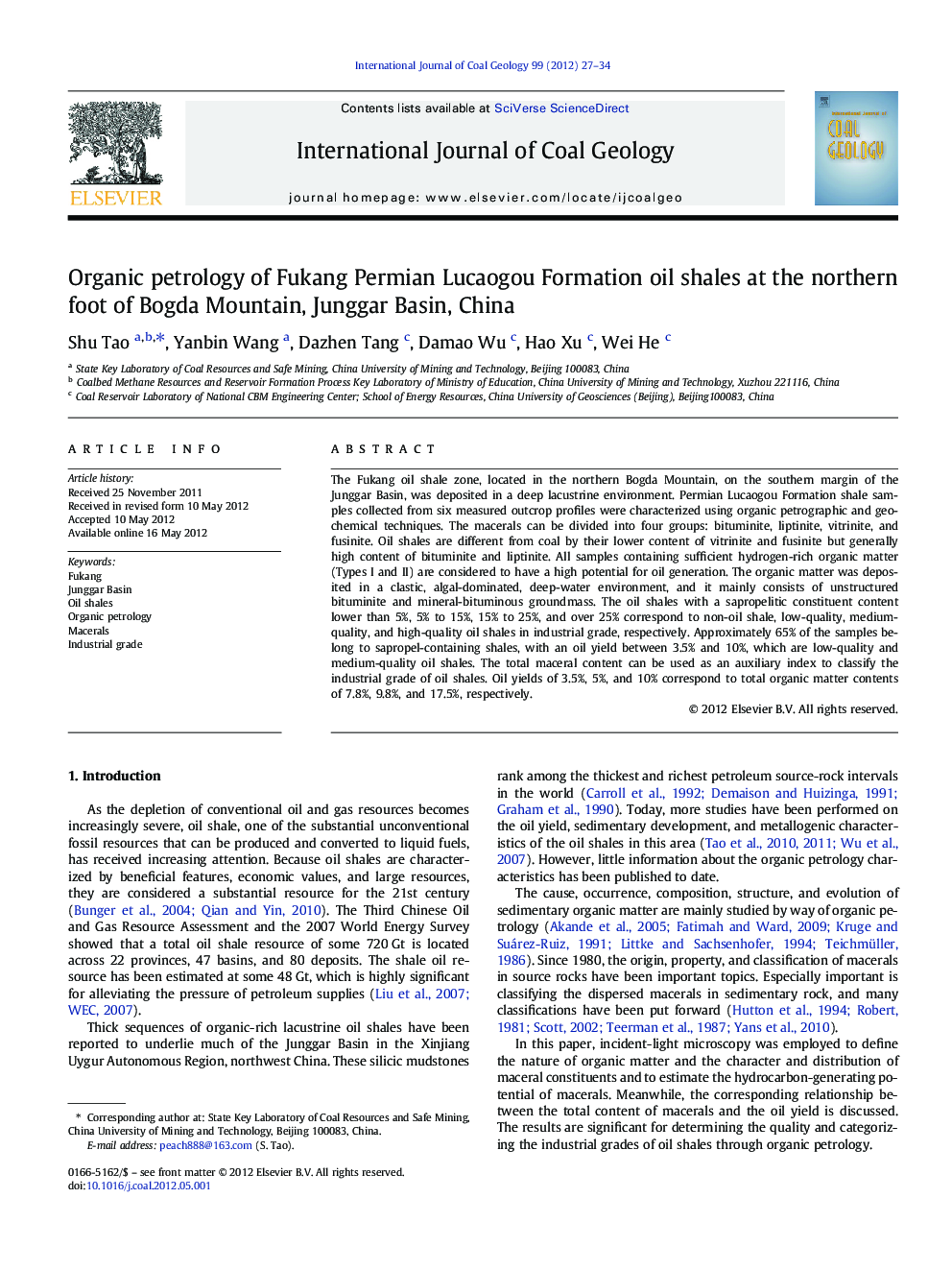| Article ID | Journal | Published Year | Pages | File Type |
|---|---|---|---|---|
| 1753446 | International Journal of Coal Geology | 2012 | 8 Pages |
The Fukang oil shale zone, located in the northern Bogda Mountain, on the southern margin of the Junggar Basin, was deposited in a deep lacustrine environment. Permian Lucaogou Formation shale samples collected from six measured outcrop profiles were characterized using organic petrographic and geochemical techniques. The macerals can be divided into four groups: bituminite, liptinite, vitrinite, and fusinite. Oil shales are different from coal by their lower content of vitrinite and fusinite but generally high content of bituminite and liptinite. All samples containing sufficient hydrogen-rich organic matter (Types I and II) are considered to have a high potential for oil generation. The organic matter was deposited in a clastic, algal-dominated, deep-water environment, and it mainly consists of unstructured bituminite and mineral-bituminous groundmass. The oil shales with a sapropelitic constituent content lower than 5%, 5% to 15%, 15% to 25%, and over 25% correspond to non-oil shale, low-quality, medium-quality, and high-quality oil shales in industrial grade, respectively. Approximately 65% of the samples belong to sapropel-containing shales, with an oil yield between 3.5% and 10%, which are low-quality and medium-quality oil shales. The total maceral content can be used as an auxiliary index to classify the industrial grade of oil shales. Oil yields of 3.5%, 5%, and 10% correspond to total organic matter contents of 7.8%, 9.8%, and 17.5%, respectively.
► Four maceral groups can be observed: bituminite, liptinite, vitrinite, fusinite. ► A petrological classification was proposed to compare oil yields. ► The kerogen types comprise types I and II, with the dominance of Type II1. ► Maceral content is an auxiliary index to classify the quality of oil shales.
